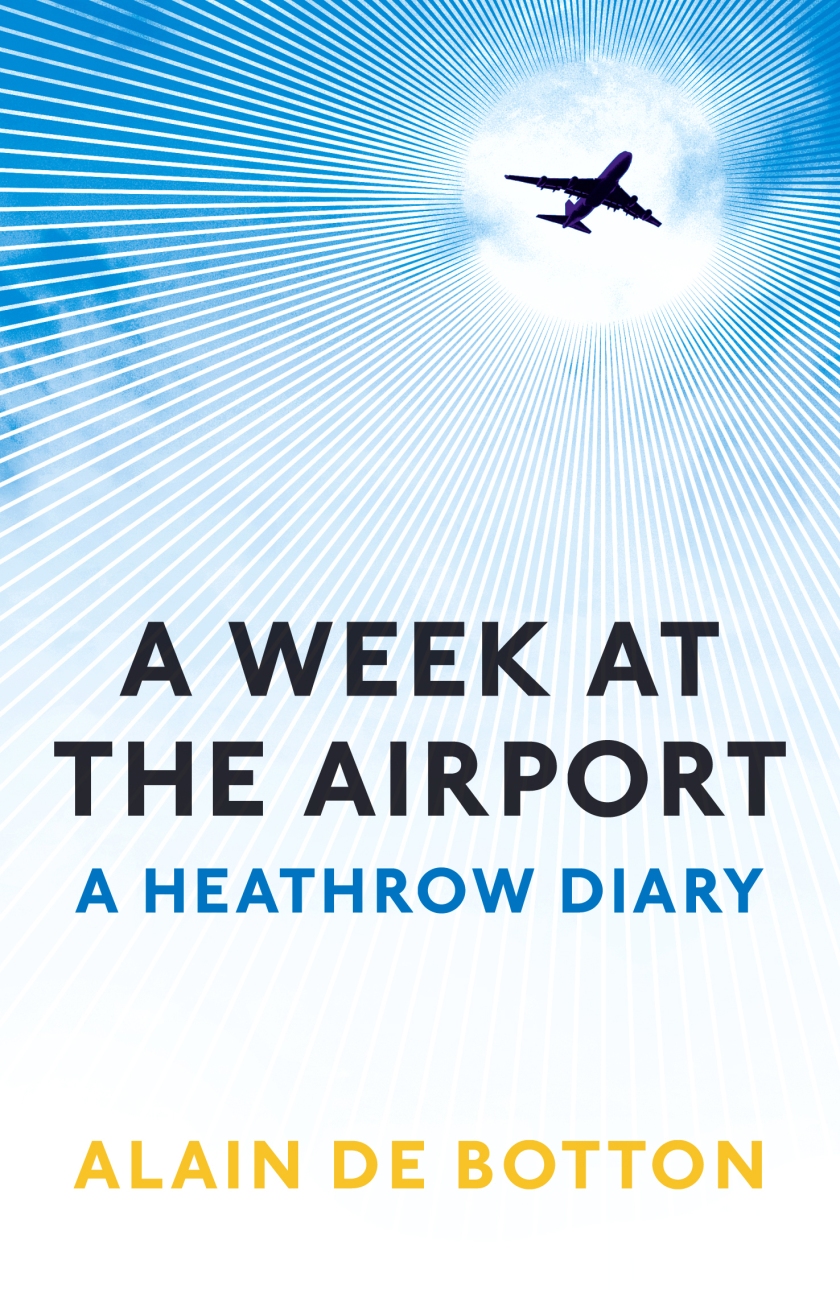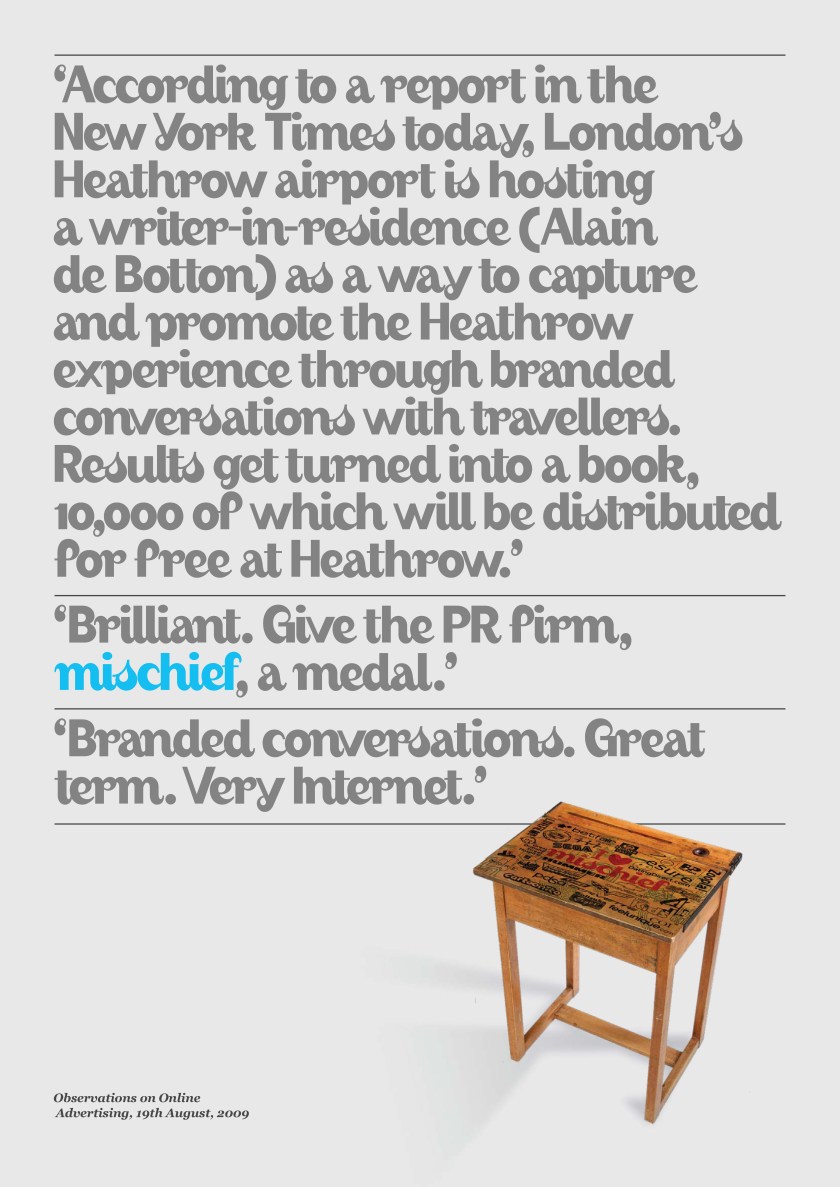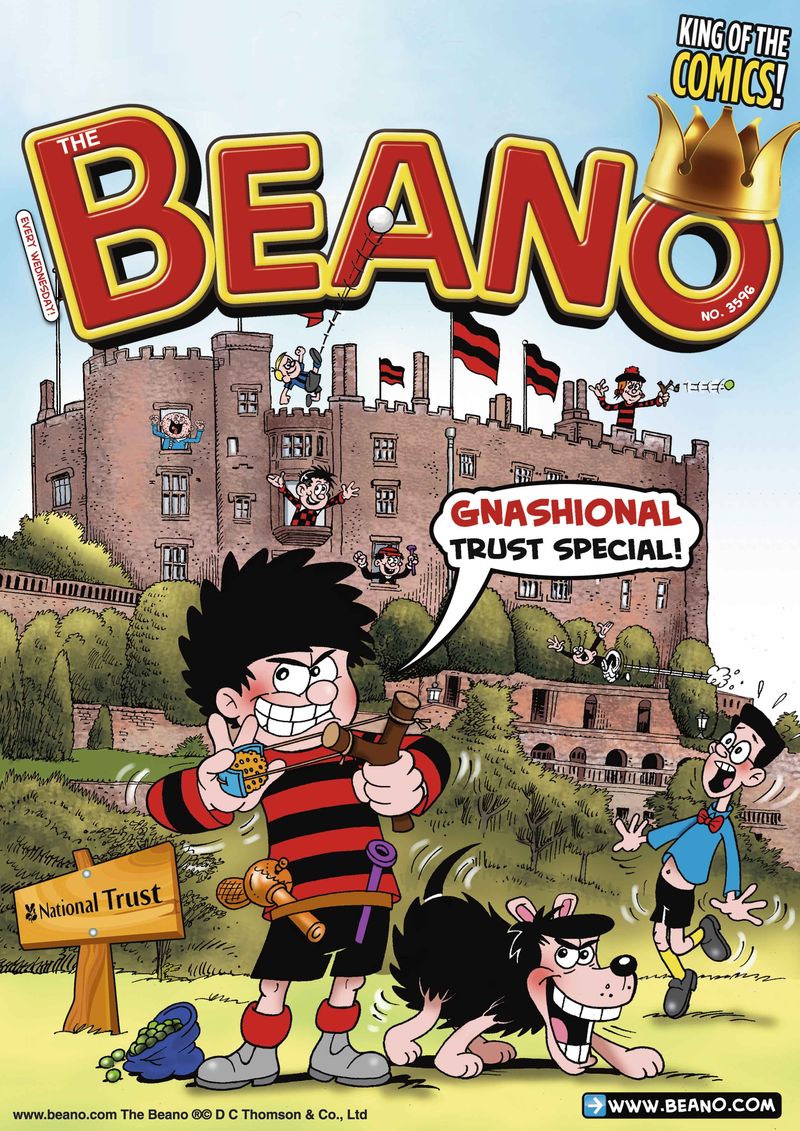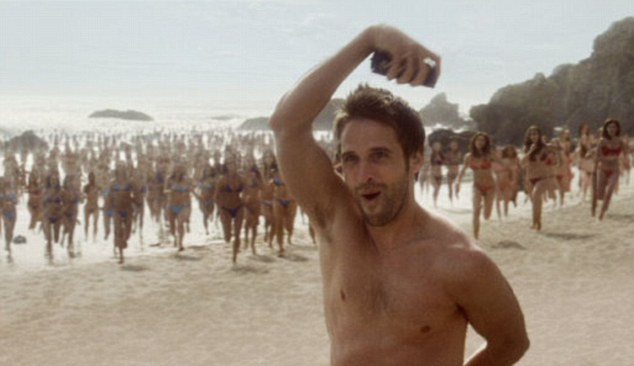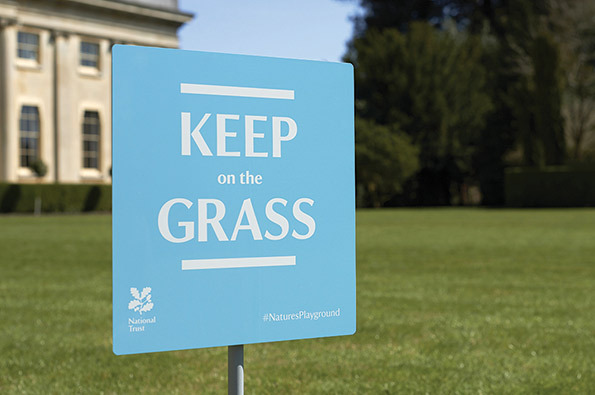People sometimes ask me how they can have more creative ideas. My answer is always the same: read wider, work harder.
I subscribe to the theory that new ideas are a collision of past ideas, so the more information I consume, the more combinations of ideas I have to put together to form an original idea. This in itself is not an original idea. Great creative thinkers usually have an encyclopedic knowledge of their subject and tend to hoard ideas. For example, Bowie catalogues sounds (including numerous versions of whale ‘song’) and Kubrick catalogued an entire estate full of visual references.
Once I decided consumer PR was for me and that I wanted to be good at having ideas, I started studying publicity stunts and creative advertising. I started by harvesting the internet, but I found the web (and still find it) pretty limited to modern history, so went further and further back into history, which is a great technique for inspiring ideas as it seems no-one looks in museums or books anymore. I must have over 1,000 books on the subject of advertising from the 1920s onwards including everything by Bill Bernbach (the jewel being a mint-condition Bill Bernbach’s Book given to me by his son, John) and everything by the self-proclaimed original madman George Lois.
Lois’s ideas in particular, which he readily acknowledges are combinations of visuals he collected from history, have inspired a number of my ideas, or at least the visual treatment of some of my ideas. For example, the image (below) made by Lois and taken from his book, What’s The Big Idea, inspired the treatment of the promo shot of a man v horse race we staged at Kempton Park in 2010 (a still from the race is below, the horse won!).
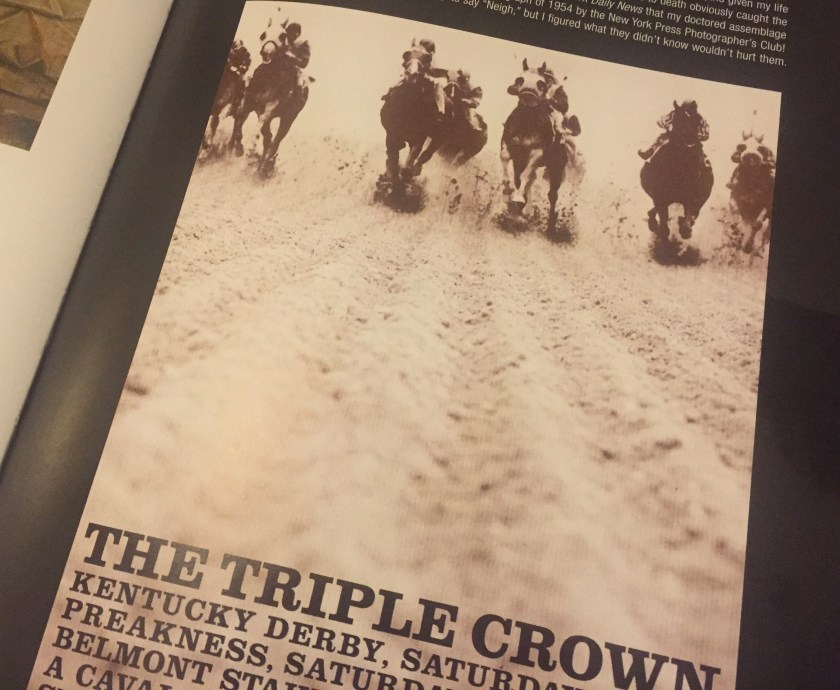
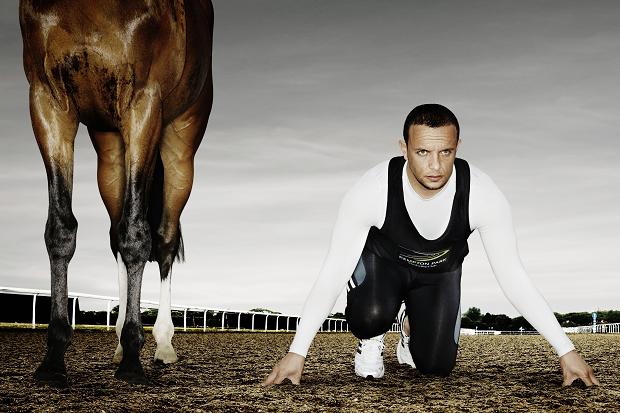
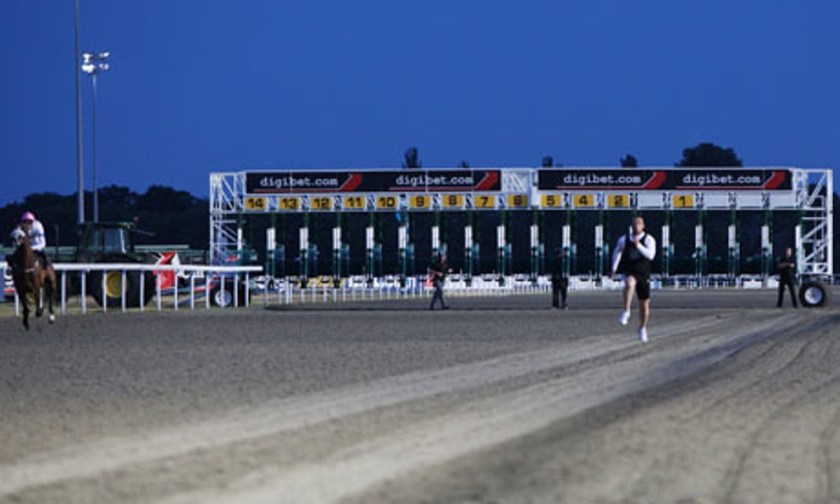
But all the reading in the world means nothing if you don’t apply the theory into practical ideas. And there is no shortcut to producing ideas. It takes time and it takes effort. To consistently churn out good (and ‘original’) creative ideas you have to get up early, go to bed late and sacrifice weekends. You can’t switch off and, if it’s the trade you want to be the best at (and charge a premium for), then you shouldn’t want to switch off. David Droga, of Droga5, became the youngest ECD of Saatchi not just because he was talented, but because he used to sleep under his desk most nights, only calling it a day when he’d filled a 100-grid page with 100 different ideas. And I reckon he got the ratio about right; it does take around 100 bad ideas to get one good idea.
When I’m absolutely knackered from thinking, I find solace in Lois’s words: “If you don’t burn out at the end of each day, you’re a bum!”
So you want to be creative? Read wider, work harder.


